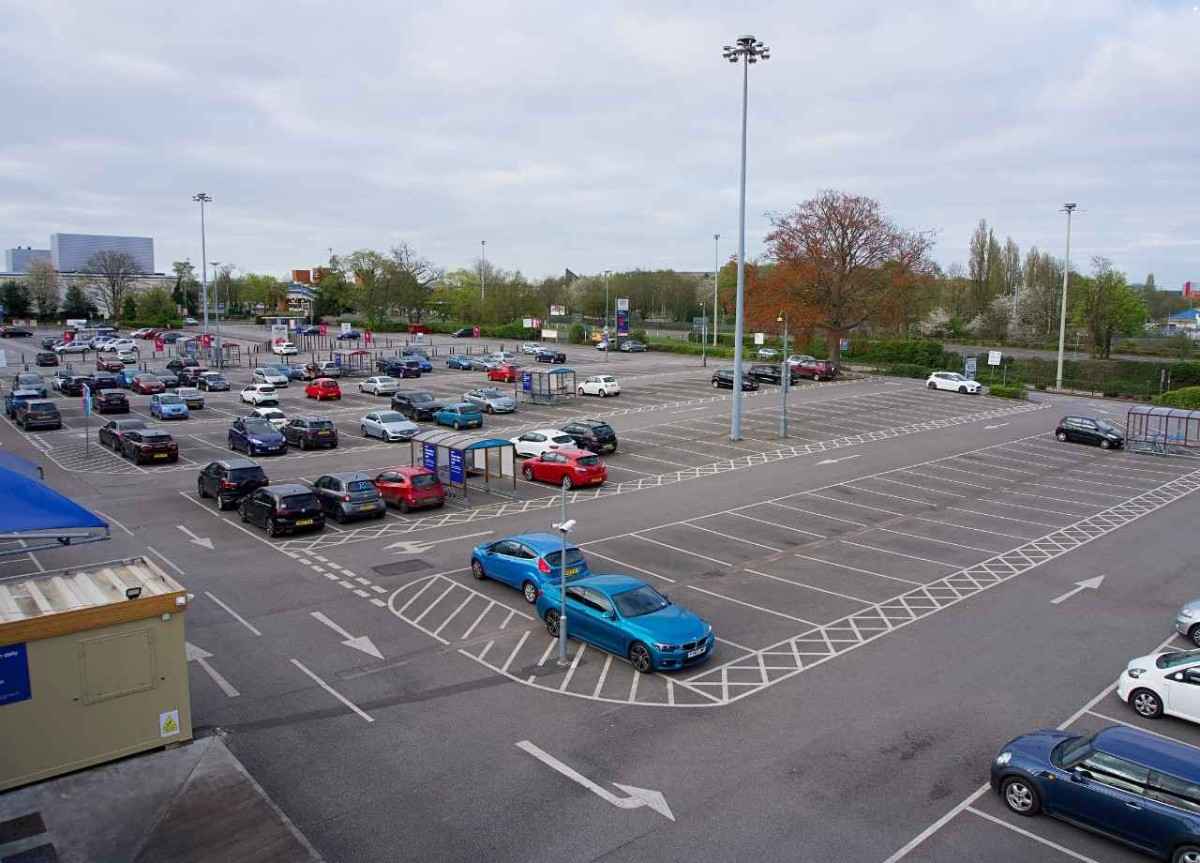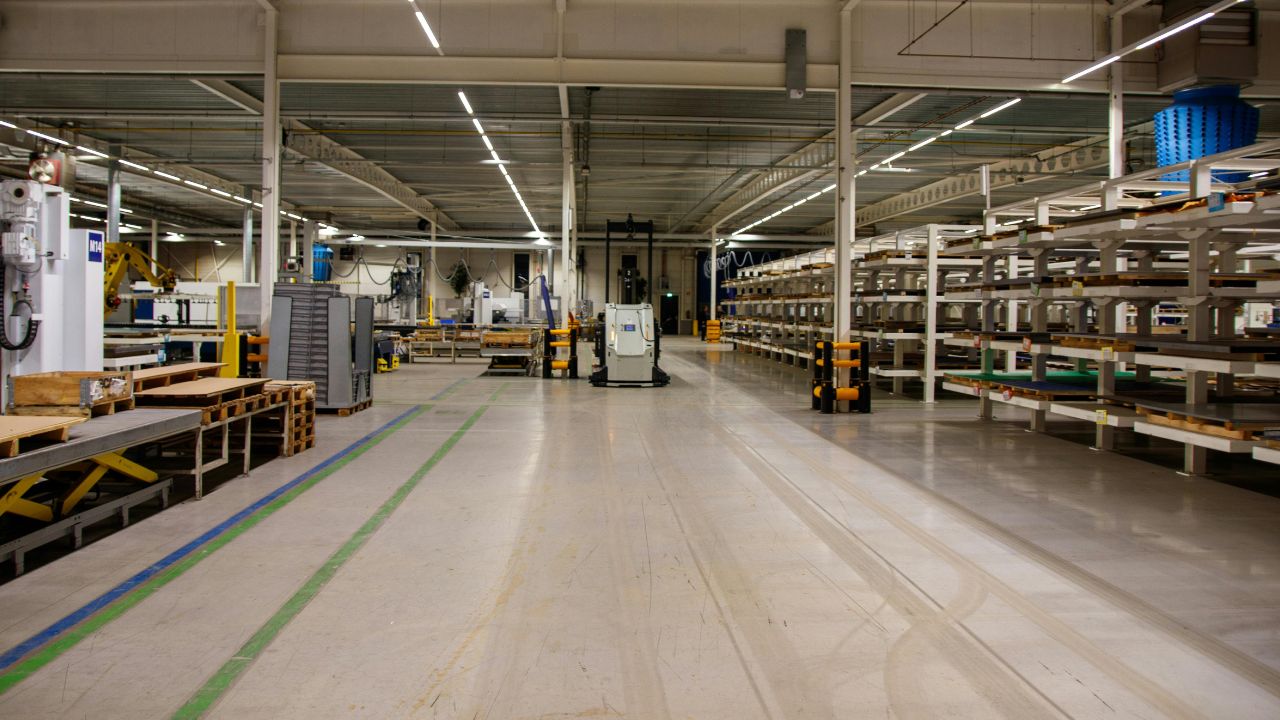Lot Design: Improve Traffic Flow at Your Commercial Facility
Ever pulled into a commercial parking lot only to find yourself stuck in a bottleneck, dodging pedestrians, or circling endlessly for a space? Poor parking lot design frustrates customers, increases accident risks, and can even drive business away. On the other hand, a well-planned lot creates a seamless experience, improving safety, efficiency, and overall customer satisfaction.
For commercial facility owners, an efficient parking lot isn’t just about convenience—it directly impacts business performance. Poor layouts lead to congestion, accidents, and negative first impressions, while a thoughtfully designed lot enhances accessibility, increases customer retention, and improves operational efficiency. Businesses that proactively address traffic flow challenges set themselves apart, ensuring a safer and more convenient experience for visitors and employees.
The Importance of Strategic Entry and Exit Points
One of the primary causes of congestion in commercial parking lots is poorly planned entry and exit points. Without proper design, vehicles back up, cross-traffic increases, and peak-hour bottlenecks frustrate drivers.
To optimize these access points:
- Position entrances and exits strategically to distribute traffic flow evenly across the property.
- Separate entry and exit lanes to prevent congestion and ensure a smoother transition between moving and parked vehicles.
- Incorporate multiple access points for larger facilities to ease vehicle flow and minimize delays.
- Align access points with surrounding roads to integrate seamlessly with external traffic patterns.
A well-planned entrance and exit system prevents gridlock, allowing customers and employees to move efficiently throughout the property.
Efficient Space Utilization Through Clear Layouts
Maximizing available space without sacrificing ease of movement is critical for parking lot functionality. Poorly designed lots cause confusion, forcing drivers to slow down or stop frequently.
Key layout considerations include:
- Clearly marked lanes and parking spaces to eliminate uncertainty and reduce delays.
- Angled parking (typically 45 or 60 degrees) for easier maneuvering and improved traffic flow.
- Adequate lane width, particularly for delivery trucks and larger vehicles that frequent commercial properties.
- Designated loading and unloading areas to prevent double-parking and blockages.
A well-structured layout minimizes unnecessary vehicle movement, ensuring smooth and predictable traffic flow throughout the lot.
Key Principles of Parking Structure Design
Effective parking structure design balances functionality, safety, and aesthetics. Unlike surface lots, multi-level parking structures require careful planning for vehicle circulation, load-bearing capacity, and pedestrian flow. The ideal design incorporates 9-foot clearances, 24-foot two-way aisles, and 1:20 slope ratios for drainage. Modern parking structures now integrate EV charging stations, solar-ready canopies, and smart parking guidance systems. For commercial properties, a well-designed parking structure can increase capacity by 300% compared to surface lots while enhancing user experience with clear wayfinding and natural lighting strategies
Incorporating Signage and Traffic Control Elements
Signage plays a crucial role in guiding drivers and pedestrians while maintaining order within a parking lot. Without proper signs, drivers may take incorrect routes, stop unpredictably, or fail to yield in critical areas.
Effective traffic control measures include:
- Directional signage to guide vehicles toward entrances, exits, and designated parking areas.
- Stop and yield signs at key intersections to regulate movement.
- Pedestrian crossings and speed limit markers to ensure driver awareness and safety.
- Traffic calming elements like speed bumps or rumble strips to control vehicle speeds.
Signage and markings should be highly visible and regularly maintained to remain effective over time.
Enhancing Pedestrian Safety and Accessibility
A safe and well-integrated pedestrian pathway system is essential in any commercial facility parking lot. Without clear pedestrian routes, foot traffic interferes with vehicle movement, increasing the risk of accidents.
To improve pedestrian safety:
- Define pedestrian crossings with clear pavement markings to separate foot traffic from driving lanes.
- Install raised walkways or curb extensions to enhance visibility and reduce driver-pedestrian conflicts.
- Ensure compliance with ADA guidelines, providing properly sized, clearly marked accessible parking spaces and barrier-free paths.
- Place pedestrian walkways near facility entrances to minimize the need for pedestrians to navigate high-traffic areas.
Well-planned pedestrian infrastructure not only enhances safety but also improves the overall experience for visitors.
Strategic Lighting and Visibility Enhancements
Insufficient lighting in parking lots can slow traffic, increase the risk of accidents, and reduce security. Proper illumination improves visibility, allowing drivers to navigate safely and confidently, particularly at night or in poor weather conditions.
Lighting considerations include:
- LED lighting for bright, energy-efficient illumination that reduces operating costs.
- Evenly distributed fixtures to eliminate dark spots and shadows.
- Well-lit signs and lane markings to improve navigation.
- Motion-activated lighting in lower-traffic areas to enhance security while conserving energy.
Enhanced visibility ensures a safer, more efficient parking lot environment for drivers and pedestrians alike.
Technology Integration for Modern Traffic Solutions
Advancements in smart parking technology help streamline traffic flow and improve the overall user experience. Modern parking systems reduce congestion by directing vehicles efficiently to available spaces.
Innovative solutions include:
- Real-time parking sensors to help drivers locate open spaces quickly.
- Digital signage displaying live parking availability at facility entrances.
- Mobile apps for reserving parking spaces, reducing unnecessary driving within the lot.
- License plate recognition systems for automated entry and exit, minimizing wait times.
Implementing smart technology reduces traffic buildup and enhances the efficiency of large commercial parking facilities.
Regular Maintenance for Sustained Efficiency
Parking lots require ongoing maintenance to preserve functionality and safety. Cracked pavement, faded markings, or obstructed signage can disrupt traffic flow and create hazards.
Routine maintenance practices include:
- Repainting lane markings and directional signs to maintain visibility.
- Filling potholes and repairing damaged pavement to prevent vehicle damage and slowdowns.
- Clearing debris and ensuring proper drainage to prevent water accumulation and slip hazards.
- Inspecting and servicing lighting fixtures to ensure consistent illumination.
Proactive maintenance helps prevent costly repairs while ensuring a well-functioning, safe environment for visitors.
Landscaping and Visual Elements
Strategic landscaping enhances aesthetics while contributing to traffic flow. Thoughtful design can prevent common traffic issues, such as cut-through driving and improper parking.

Effective landscaping features:
- Medians and islands to guide vehicles along designated paths.
- Trees and shrubs placed to prevent blind spots while maintaining an inviting atmosphere.
- Green spaces integrated with stormwater management systems, reducing runoff while improving aesthetics.
When properly designed, landscaping elements contribute to both the functionality and appearance of a parking facility.
Considering Future Growth and Expansion
Many commercial facilities outgrow their parking lots, leading to congestion and inefficiencies. Designing for future expansion prevents costly redesigns down the road.
Planning for growth includes:
- Leaving room for additional access points to accommodate increased traffic.
- Using modular design principles to allow for future expansion.
- Ensuring adaptable infrastructure that integrates with evolving technology and business needs.
A scalable parking lot design keeps a facility efficient and customer-friendly, even as demand increases.
National Facility Contractors specializes in designing and optimizing parking lots for commercial facilities. With expertise in strategic layouts, traffic control solutions, and modern parking technology, we help businesses improve traffic flow, enhance safety, and create seamless visitor experiences. Whether planning a new parking lot or upgrading an existing one, our team ensures long-term functionality and efficiency.
Conclusion
Optimizing parking lot design does more than improve aesthetics—it enhances traffic flow, safety, and overall business efficiency. Strategic planning, proper signage, smart technology integration, and routine maintenance contribute to a seamless parking experience. Investing in an effective parking layout today prevents costly congestion issues in the future, ensuring a smooth and hassle-free experience for visitors and employees alike.






